This season: 26 games, 3 goals, 7 assists, 10 points, 15 penalty minutes, -7 rating, 48 shots, -5.0% CF%Rel, .983 PDO, 19:28 time on ice (with Los Angeles); 79 games, 6 goals, 20 assists, 26 points, 49 penalty minutes, -15 rating, 134 shots, -6.1% CF%Rel, .994 PDO, 20:00 time on ice (total)
The good: There had been Dion Phaneuf-to-Los Angeles scuttlebutt for some time, and before Marian Gaborik’s name was attached, Dustin Brown and Mike Richards’ names had been floated to varying degrees of legitimacy. At the 2017 NHL Draft, Rob Blake met with Senators GM Pierre Dorion to begin a more fruitful conversation towards a trade that ultimately grew into his most significant swap as Kings GM to date. There were multiple moving parts in terms of players, contracts and salary retention, but essentially Los Angeles swapped out now-36-year-old Marian Gaborik, who carries a $4.875 AAV – but an average of only $3.6-million per year of actual payment – through 2021 in exchange for the now-33-year-old Phaneuf, who will come in at $5.25M over the same time period after Ottawa retained one-quarter of his salary. To facilitate the retention and complete the trade, to-be 26-year-old RFA center Nick Shore and hardened to-be 34-year-old center Nate Thompson, who has one more season at $1.65M on his contract, switched sides as well. Prior to the trade, Gaborik had been scratched for three consecutive games and had played seven minutes in another, and in the event of injury, the team would’ve been faced with a shallower defensive corps than they were comfortable. “He understands the little things that go on with the game against certain players and for certain situations, but if you look at our D-core in whole with Doughty, Muzzin and Martinez, Forbort and Phaneuf in that mix and whoever you want to use with the last pairing, I think it makes us a deeper team than we were a couple of days go,” Blake said after the trade. And thus ends the history lesson.
Phaneuf isn’t the same player he was when he was pounding in 97 goals over his first seven seasons in the league, but he still owns a diverse and beneficial mix of toughness without the puck, and some offensive proclivity with it, all backed by a leadership component that has been praised long before he switched teams. He was a highly useful power play option and quickly found a hot hand after joining the Kings, who scored to the rate of 9.95 goals per 60 minutes while Phaneuf was on the ice in 5×4 situations, the third best rate on the team and the best rate among club defensemen. With the arrivals of Phaneuf and Ilya Kovalchuk, Los Angeles boasts excellent depth on the power play with Anze Kopitar, Jeff Carter, Dustin Brown, Tyler Toffoli, Drew Doughty, Alec Martinez, Jake Muzzin, Oscar Fantenberg and even Adrian Kempe and Michael Amadio, the latter of whom led the team with an on-ice 14.2 5×4 GF60 in just over 30 minutes of action. Prior to the trade, the Kings ranked 20th in the league with a 19.4% power play rate; from Phaneuf’s arrival onward, they ranked 12th at 22.5%. All three of his L.A. goals and seven of his 10 points came during power play time; another assist was recorded at six-on-five. More on that in a moment. But even though his and the team’s production didn’t come at 5×5 play – the team shot 4.2% while he was on the ice – he was fine at keeping the puck out of the net and limiting high-danger scoring chances. Kings goalies stopped 94.2% of all shots they faced in 5×5 play while Phaneuf was on the ice. He also has the respect of the officials and drew seven penalties, taking only six and finishing with a positive penalty plus-minus that isn’t easy for a defenseman to acheive. But in addition to the numbers, there’s the battle-willingness and preparedness that results in hard, heavy play. “He’s a guy who has stepped up on me before and got me before so I know what it’s like to be hit by him. He can hit hard and he’s physical at all times. He’s scary, like he can fight too. Like guys are scared of him. When you’re a 20-minute guy that can do all those things, that’s huge to have on your team,” said Drew Doughty, who also noted that Phaneuf and Thompson “both play our style of hockey.”
The bad: His shot and possession-based rates weren’t good, particularly when placed within the context of his deployment. This isn’t the full story, but Phaneuf started 54.7% of his shifts in the offensive zone – the highest percentage among L.A. defensemen – and was pinned back in his own end to the tune of a 45.7% raw 5×5 Corsi-for and a -5.0 CF%Rel. Alongside Martinez in 5×5 play, the team was out-chanced 161-124, per Natural Stat Trick. Despite the discrepancy in chances, the team was break-even in goals with Phaneuf and Martinez on the ice together, due in large part to a low shooting percentage both by the Kings and their opponents. Still, it’s a concern when the players who logged the second and third-most 5×5 minutes after the trade are getting hemmed in, which is what the spreadsheets depict.
The possession rates don’t paint the entire picture, though, and again, there’s no way to accurately measure what Phaneuf means to the players around him, particularly those just getting their feet wet in the NHL. A common offering has been that Phaneuf easily integrates himself into rooms and leaves a lasting impression on his younger teammates – “He’ll be one of my lifelong friends after hockey,” James van Riemsdyk told Jonah Siegel of The Athletic shortly before the trade – and the word was that Phaneuf was reserving tee times and jostling in verbal banter while quickly integrating with his new teammates. “I look at the way that they welcomed me in the room and it makes you feel comfortable as a player,” Phaneuf said in late February. “Coming into a room when they welcome you that way, and when you feel more comfortable I believe you’ve got more to give.”
That veteran leadership, an asset the Kings both possess and looked to fortify, is also expensive. Phaneuf is on the hook for three more years at $5.25M, and while such term is difficult to weigh independent of the ability to shed Gaborik’s contract, it’s still major capital invested in a 33-year-old who spots about fifth on the defensive hierarchy.
Going forward: The Gaborik contract was not going to be an easy contract to move, let alone use to acquire an asset at a particular position of need. Phaneuf has limitations, but he’s going to play and continue to help acclimate younger defenders like Daniel Brickley, and, down the line, Kale Clague and the like. There are concerns about the degree to which the ice was tilted against Phaneuf and his partner, and those are valid concerns. They’d been expressed well before he joined the Kings. There’s also some murkiness about how an expensive player nearing his mid-30’s will be handled, say, one year from now, but any sort of projection beyond the upcoming season in which he’ll be expected to maintain his array of roles is premature and hazy.
Phaneuf, like Martinez, has an ability to eat minutes on the right side and reduce some of Doughty’s workload. Without Christian Folin’s hardened third pairing, right-side minutes, it’s important that Paul LaDue takes the requisite step towards lineup regularity while Phaneuf or Martinez establishes it on the right side of the second pair. This could be a year we see a Muzzin-Martinez reunion, with Phaneuf adding his special teams versatility to his work alongside the Fantenberg-LaDue-Brickley-MacDermid consortium. The partnership may not be as set in stone as it was in his 26 games late last season, when he spent 89% of all available 5×5 minutes alongside Martinez, and other younger, intriguing defensemen, such as Brickley, will ultimately have their own say of where they fit and how many minutes they deserve — once they make the team. There may be a drop, but given his multi-situational use, Phaneuf still seems poised to average high-teen minutes and be among the players Stevens trusts in dicey, late-game moments. “I look at the way that they welcomed me in the room and it makes you feel comfortable as a player,” Phaneuf said in February. “Coming into a room when they welcome you that way, and when you feel more comfortable I believe you’ve got more to give.”
Player evaluations: #3 DION PHANEUF | #6 JAKE MUZZIN | #7 OSCAR FANTENBERG | #8 DREW DOUGHTY | #9 ADRIAN KEMPE | #11 ANZE KOPITAR | #13 KYLE CLIFFORD | #19 ALEX IAFALLO | #22 TREVOR LEWIS | #23 DUSTIN BROWN | #24 DEREK FORBORT | #27 ALEC MARTINEZ | #32 JONATHAN QUICK | #44 NATE THOMPSON | #52 MICHAEL AMADIO | #70 TANNER PEARSON | #73 TYLER TOFFOLI | #77 JEFF CARTER | KUEMPER / CAMPBELL | THE OTHERS
-Advanced stats via Hockey Reference, Natural Stat Trick
-Lead photo via Harry How/Getty Images

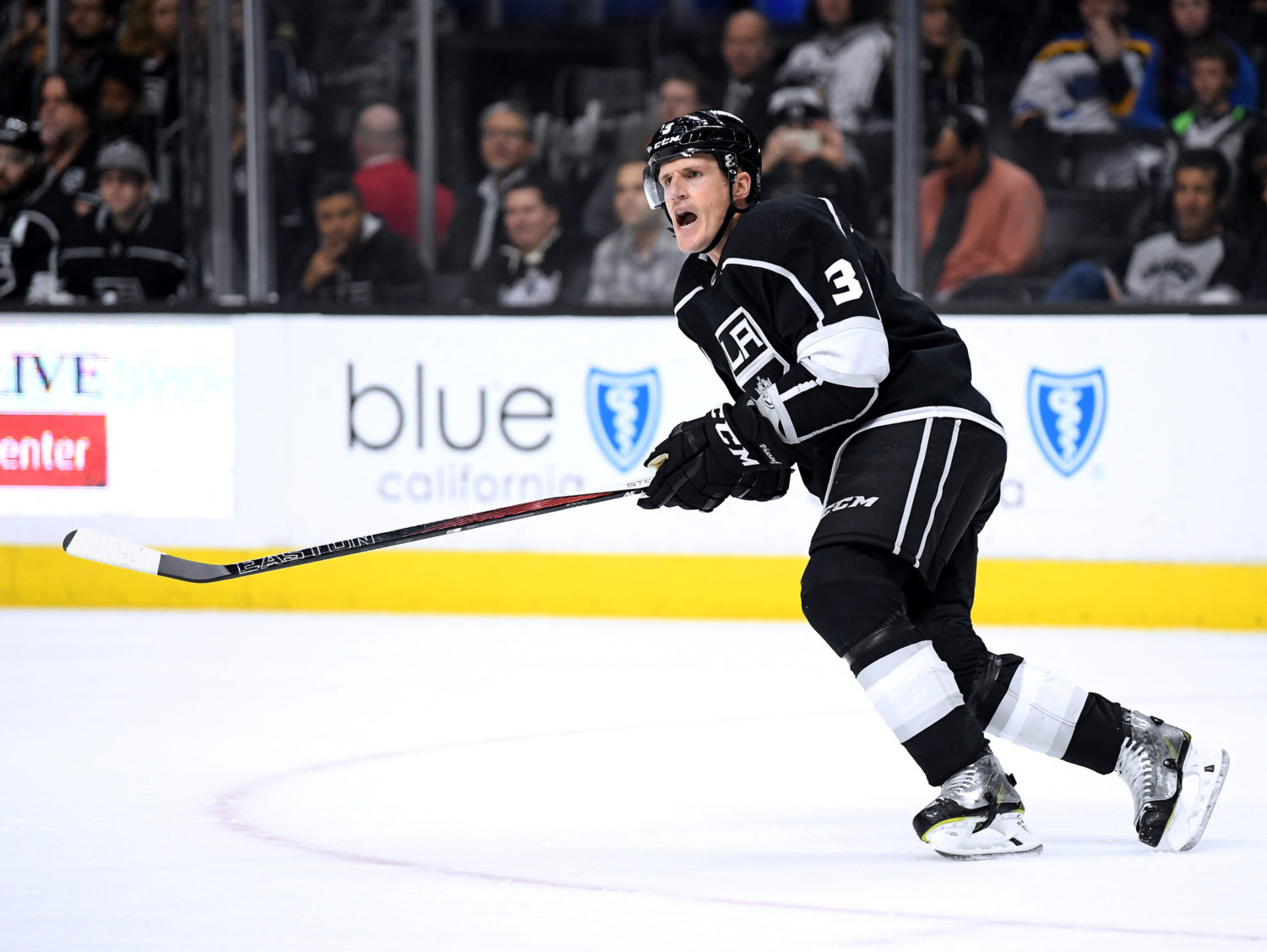
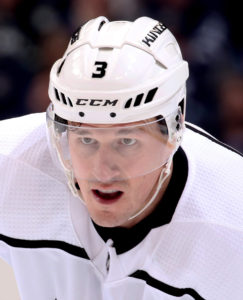
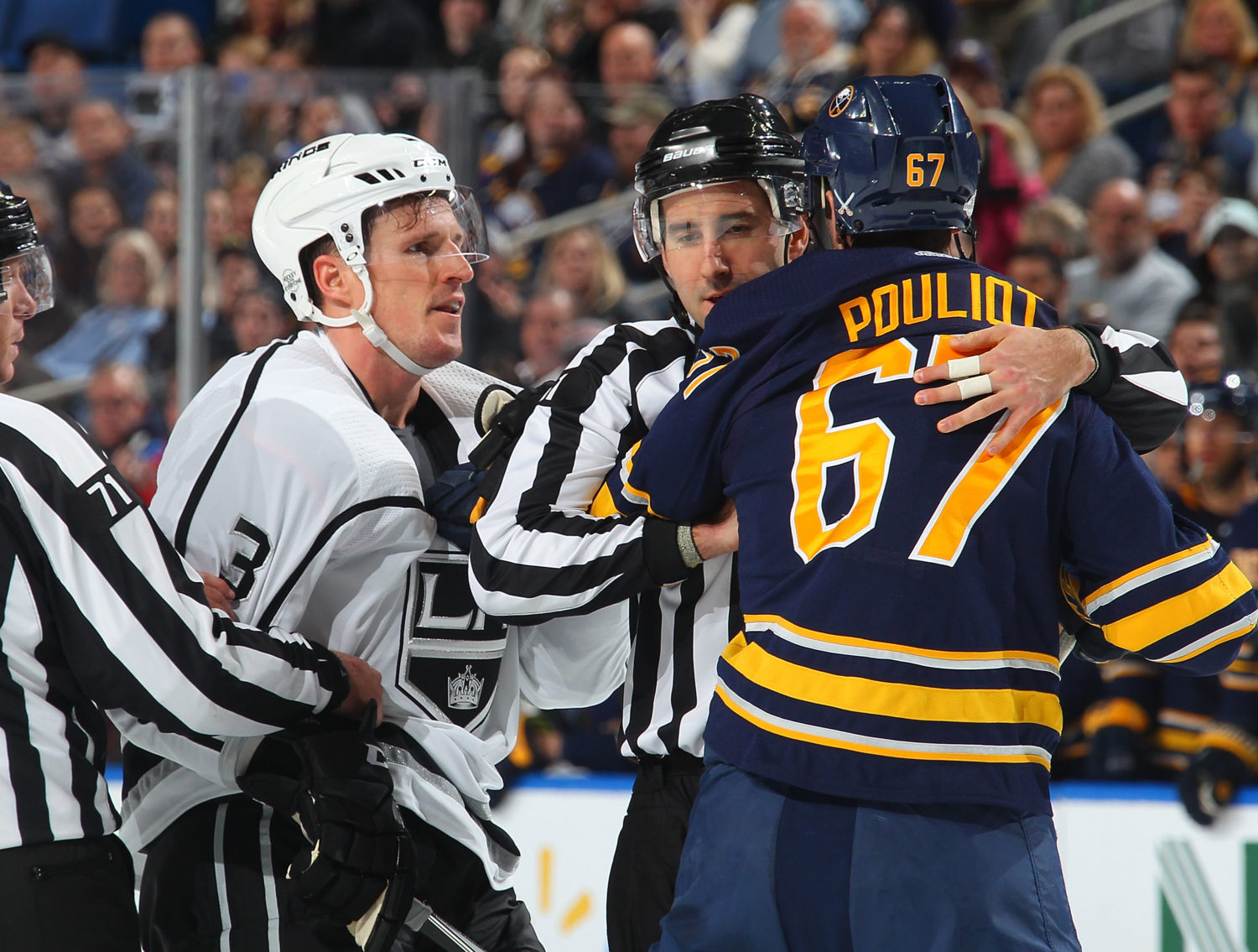
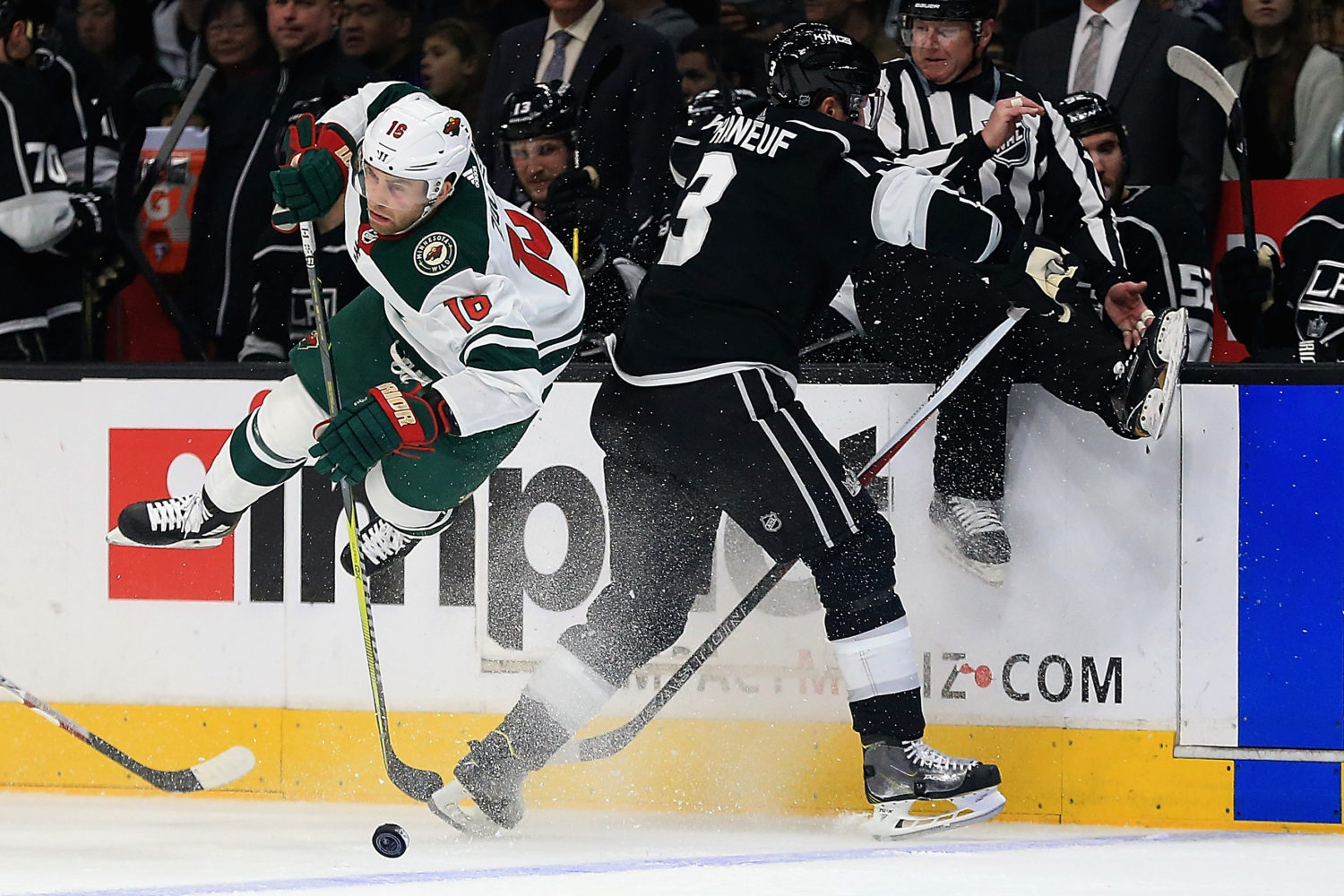
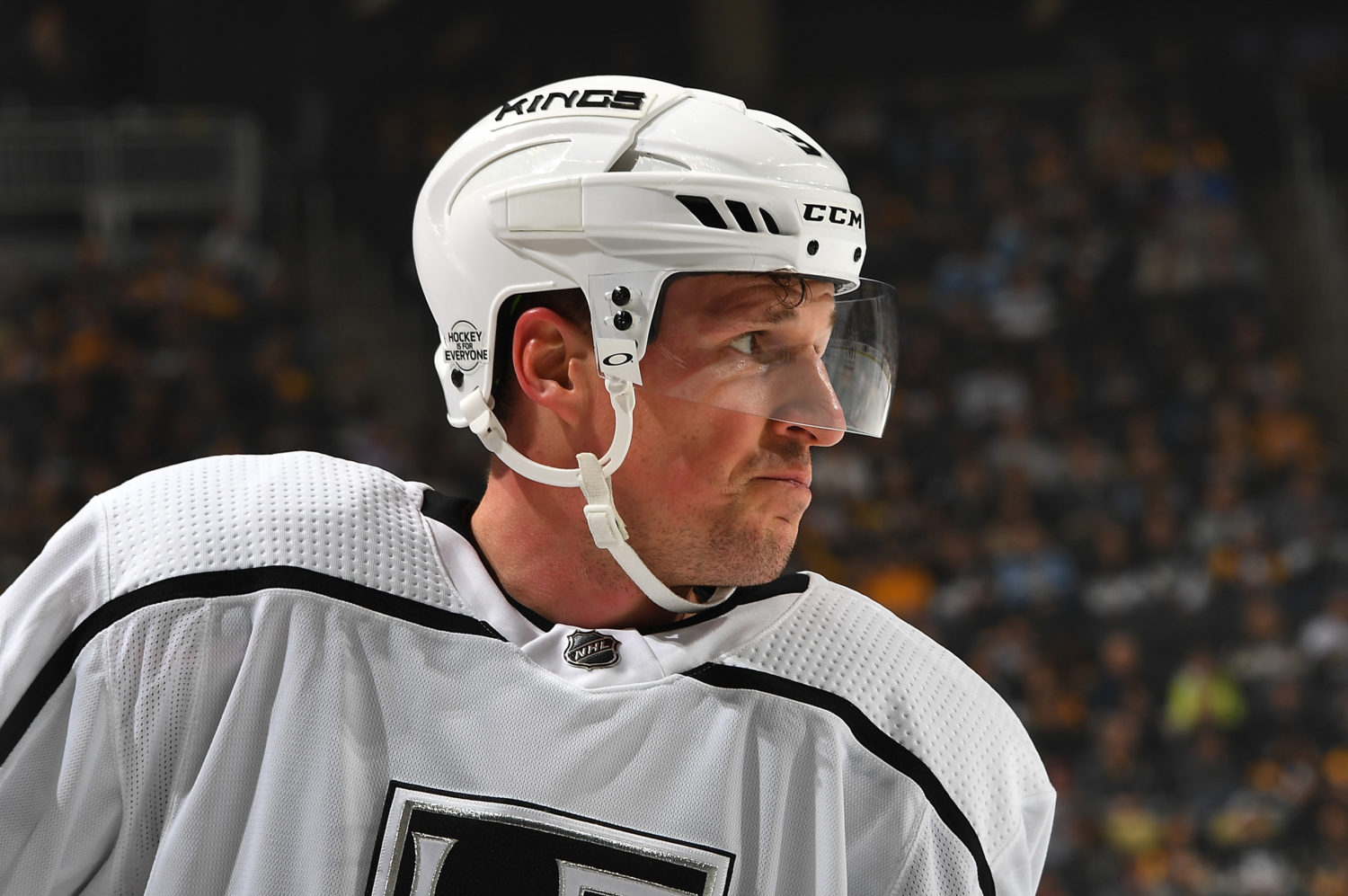
Rules for Blog Commenting
Repeated violations of the blog rules will result in site bans, commensurate with the nature and number of offenses.
Please flag any comments that violate the site rules for moderation. For immediate problems regarding problematic posts, please email zdooley@lakings.com.